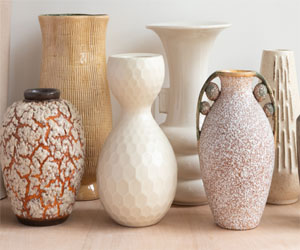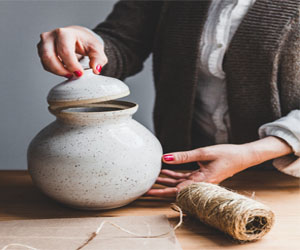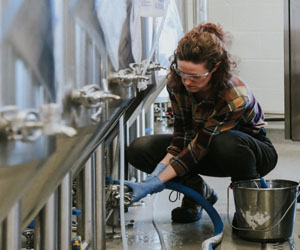


Nurturing Nature And Your Garden

As the world increasingly emphasizes sustainability and eco-conscious practices, gardening enthusiasts are turning their attention to sustainable herb cultivation. It's not just about growing flavorful and aromatic herbs; it's about doing so in a way that respects the environment and promotes the well-being of all living creatures. In this article, we will explore the principles of sustainable herb cultivation and how it benefits both your garden and the planet.
The Essence Of Sustainability In Herb Cultivation
Sustainable herb cultivation involves growing herbs in a manner that minimizes environmental impact, conserves resources, and promotes long-term garden health. This approach takes into consideration the entire lifecycle of the garden, from planting and maintenance to harvest and beyond.
Sustainable Herb Cultivation Practices
Organic Gardening: The foundation of sustainability in herb cultivation is organic gardening. Avoid synthetic pesticides and fertilizers, opting instead for natural and organic alternatives. This practice ensures that your herbs are free from harmful chemicals.
Water Conservation: Use water wisely by installing efficient irrigation systems like drip hoses or soaker hoses. Collect rainwater for irrigation to reduce dependence on municipal water supplies.
Composting: Create your compost heap to recycle kitchen scraps and garden waste. Compost enriches the soil, reduces the need for synthetic fertilizers, and minimizes landfill waste.
Crop Rotation: Implement crop rotation techniques to prevent soil depletion and minimize the risk of herb-specific diseases. Rotating herbs within your garden beds maintains soil health and vitality.
Beneficial Insects: Attract and support beneficial insects like ladybugs, bees, and butterflies. These insects help with pollination and natural pest control in your herb garden.
Mulching: Apply organic mulch, such as straw or shredded leaves, to conserve soil moisture, suppress weeds, and maintain a stable soil temperature.
Native Plants: Integrate native plants into your herb garden, which require less maintenance and provide habitat for local wildlife.
Seed Saving: Save seeds from your herbs for future planting. This reduces the need to purchase seeds, promotes genetic diversity, and preserves heirloom varieties.
The Benefits Of Sustainable Herb Cultivation
Environmental Stewardship: Sustainable herb cultivation reduces the use of synthetic chemicals and conserves resources, contributing to the well-being of the planet.
Healthier Herbs: Herbs grown sustainably are healthier and often more flavorful, as they are not exposed to chemical residues.
Long-Term Garden Viability: By nurturing the soil and ecosystem in your herb garden, you ensure its long-term viability and productivity.
Cost-Efficiency: Sustainable practices can reduce the need for costly chemical inputs, making herb cultivation more budget-friendly.
Biodiversity: Encouraging a diverse range of plants and beneficial insects promotes biodiversity, which is essential for a thriving garden ecosystem.
Sustainable herb cultivation is not only a responsible choice but also a rewarding and fruitful one. By following eco-conscious practices in your herb garden, you can contribute to the preservation of the environment while enjoying the many benefits of growing your herbs. The sustainable herb cultivation journey allows you to be in harmony with nature, savor the fruits of your labor, and promote a healthier planet for future generations. So, why not embark on this sustainable gardening journey and see your herb garden thrive while nurturing the Earth?






The Allure Of Vintage Items
 A Glimpse Into The Past
A Glimpse Into The Past
Vintage items transport us back in time, allowing us to connect with the past and experience the styles and aesthetics of bygone eras. Each vintage piece carries a story, representing the culture, trends, and craftsmanship of the time in which it was created. It's like holding a tangible piece of history in your hands.
Unique And One-Of-A-Kind
One of the primary attractions of vintage items is their uniqueness. Unlike mass-produced modern goods, vintage pieces are often one-of-a-kind or produced in limited quantities. This rarity gives vintage items a sense of exclusivity and individuality, making them highly sought after.
The Art Of Crewel Embroidery
 A Stitch In Time: The History Of Crewel Embroidery
A Stitch In Time: The History Of Crewel Embroidery
Crewel embroidery has a storied history that dates back over a thousand years. The word "crewel" is believed to have originated from the Old French word "croisel," which referred to a piece of metal or a slender wire used for embroidery. Crewelwork gained prominence in Europe during the 16th and 17th centuries and was particularly associated with England.
Characteristics Of Crewel Embroidery:
Crewel embroidery is known for its distinct characteristics, which set it apart from other embroidery techniques:
Use Of Crewel Wool: Crewel wool, a fine and twisted two-ply yarn, is the primary thread used in this technique. Its thickness and texture lend depth and dimension to the designs.
Raised Surface Stitches: Crewel embroidery often employs raised or padded stitches. These give the designs a textured, three-dimensional quality.
Botanical And Natural Motifs: Traditional crewelwork is renowned for its intricate depictions of botanical and natural motifs, including flowers, vines, and animals. These designs capture the essence of the natural world.
Craftsmanship And Artistry In Clay
 The Creative Process: The creation of handmade ceramics begins with selecting the right type of clay, which can range from earthenware to stoneware to porcelain, each offering unique characteristics and possibilities. Once the clay is chosen, it's hand-worked into the desired shape, whether a functional piece like a bowl or a purely decorative sculpture.
The Creative Process: The creation of handmade ceramics begins with selecting the right type of clay, which can range from earthenware to stoneware to porcelain, each offering unique characteristics and possibilities. Once the clay is chosen, it's hand-worked into the desired shape, whether a functional piece like a bowl or a purely decorative sculpture.
Artists often experiment with textures, patterns, and surface treatments to give their pieces a distinct character. They may carve, incise, or use various glazing and decorating techniques to achieve their artistic goals. Each piece reflects the artist's individual style and creative expression.
The Human Touch: What sets handmade ceramics apart is the human touch evident in every detail. These pieces bear the imperfections and idiosyncrasies that result from the artist's hands, making each item truly unique. The texture of the clay, the nuance of the glaze, and the individual characteristics of the artist's work contribute to the rich diversity of handmade ceramics.
Functional And Decorative Art: Handmade ceramics serve a dual purpose in both the realms of functional and decorative art. Many artists create pottery that is not only beautiful but also functional, such as mugs, plates, and vases. These pieces add a personal and artistic touch to everyday life, enhancing the aesthetic experience of daily rituals like enjoying a cup of coffee or arranging flowers.
Crafting Creativity, Tradition, And Skill
 A Marriage Of Form And Function: At its core, woodworking combines form and function. Craftsmen and artisans meticulously design and create objects that are not only visually appealing but also serve practical purposes. From finely crafted tables and chairs to elegant cabinets, woodworking is a harmony of aesthetics and utility.
A Marriage Of Form And Function: At its core, woodworking combines form and function. Craftsmen and artisans meticulously design and create objects that are not only visually appealing but also serve practical purposes. From finely crafted tables and chairs to elegant cabinets, woodworking is a harmony of aesthetics and utility.
The Craftsmanship Ethic: Woodworking is synonymous with craftsmanship. The commitment to precision, attention to detail, and dedication to quality are the cornerstones of this craft. Artisans take pride in their ability to turn raw timber into exquisite creations, and the art of craftsmanship is passed down from one generation to the next.
Modern Technology Meets Tradition: The world of woodworking has evolved over time. While traditional hand tools and joinery techniques still hold a special place, modern technology has ushered in a new era of woodworking. Computer-aided design (CAD) and computer numerical control (CNC) machines have revolutionized the field, allowing for precise and intricate creations that were once challenging to achieve.
A Medium For Creativity: Woodworking is a canvas for creative expression. Artists and woodworkers find inspiration in the natural beauty of wood, its unique grains, and its warm tones. The process of envisioning a project and bringing it to life is a journey of self-expression, where each piece becomes a reflection of the creator's imagination and skill.
Crafting Innovation In A Glass
 The Rise Of The Microbrewery: The microbrewery movement gained momentum in the late 20th century as a response to the dominance of large, corporate breweries. These passionate and entrepreneurial brewers sought to reintroduce diversity and flavor into a beer market that had become inundated with mass-produced, homogenized brews.
The Rise Of The Microbrewery: The microbrewery movement gained momentum in the late 20th century as a response to the dominance of large, corporate breweries. These passionate and entrepreneurial brewers sought to reintroduce diversity and flavor into a beer market that had become inundated with mass-produced, homogenized brews.
Independent Spirit And Innovation: Microbreweries thrive on their independent spirit. They are often born out of a brewer's desire to experiment, push boundaries, and craft beers that are unique and distinct. This spirit of innovation has led to a remarkable range of beer styles and flavor profiles that cater to every taste preference. From hoppy IPAs to rich stouts and sours, microbreweries offer a diverse array of options for beer enthusiasts.
Craftsmanship And Quality: One of the cornerstones of microbreweries is their unwavering commitment to quality. Brewmasters at these small establishments are deeply involved in every step of the brewing process, from selecting the finest ingredients to meticulously monitoring each batch. The focus on craftsmanship ensures that the beer produced is of the highest quality.
Community And Local Engagement: Microbreweries are not just places to brew and enjoy beer; they often serve as community hubs. Local microbreweries foster a sense of belonging, with patrons frequently interacting with brewers, learning about the brewing process, and enjoying unique, small-batch brews.
Finding Clarity In A Noisy World
 Personal Growth: By contemplating your life and experiences, you can set goals, make plans, and track your progress more effectively. Quiet reflection is a valuable tool for personal development and self-improvement.
Personal Growth: By contemplating your life and experiences, you can set goals, make plans, and track your progress more effectively. Quiet reflection is a valuable tool for personal development and self-improvement.
Now, let's explore how to incorporate quiet reflection into your daily life:
Set Aside Time: Schedule specific time each day for quiet reflection. This could be as brief as a few minutes or longer, depending on your preferences and availability.
Choose A Peaceful Environment: Find a quiet and comfortable place where you won't be disturbed. It might be a corner of your home, a park, or a quiet room in your workplace.
Disconnect: Put away electronic devices during your reflection time. Turn off notifications and resist the urge to check your phone, emails, or social media.
Breathe: Start your reflection with deep, calming breaths. This simple exercise can help you relax and transition into a state of mindfulness.
Journal: Consider keeping a reflection journal. Write down your thoughts, feelings, and insights during your quiet moments. Journaling can help you track your progress and clarify your thinking.
Mindfulness Meditation: If you find it difficult to stay focused, mindfulness meditation techniques can guide you in maintaining concentration during reflection.